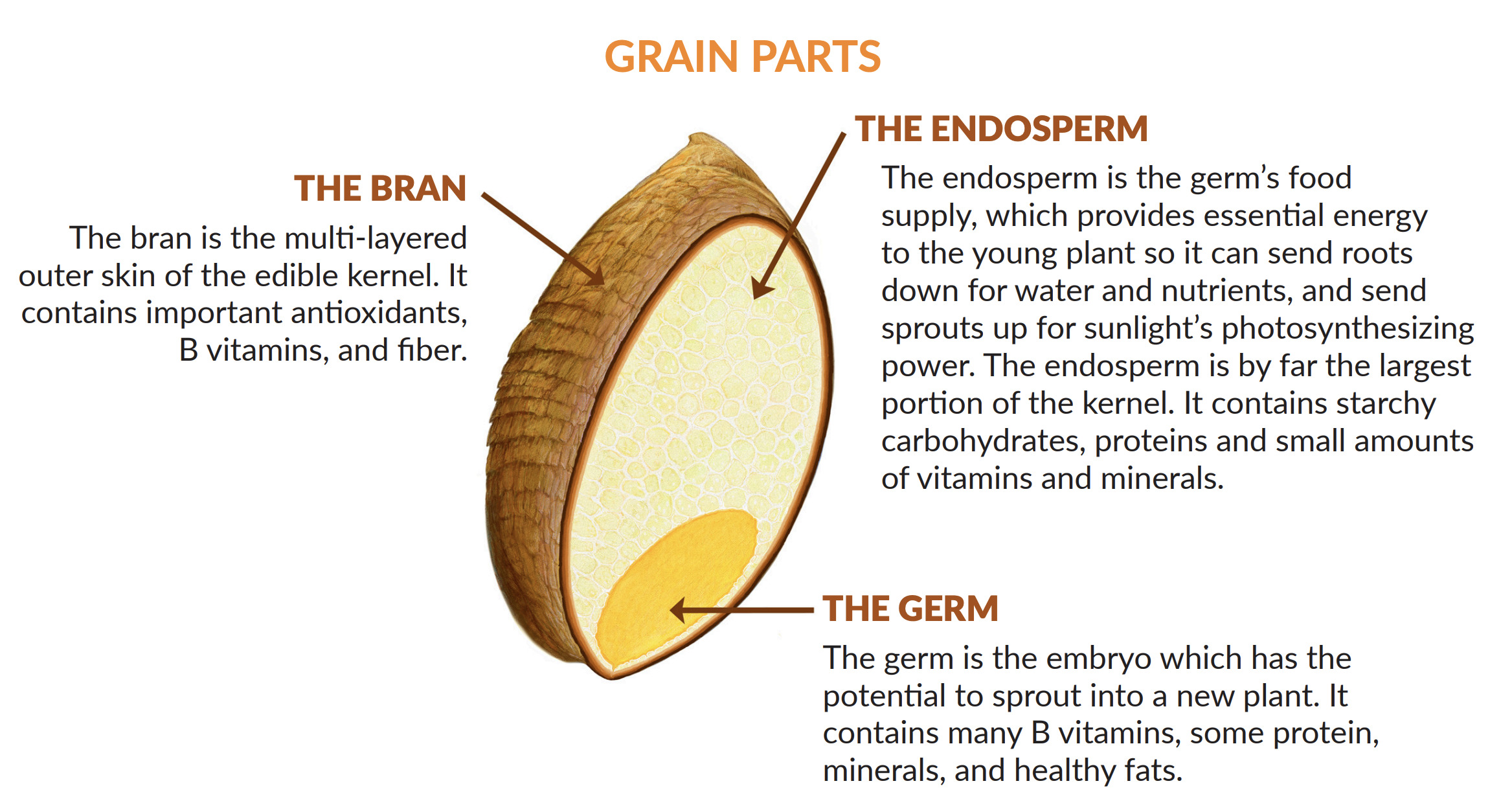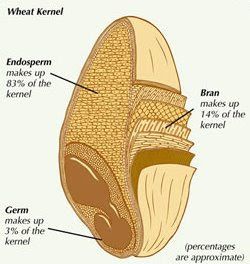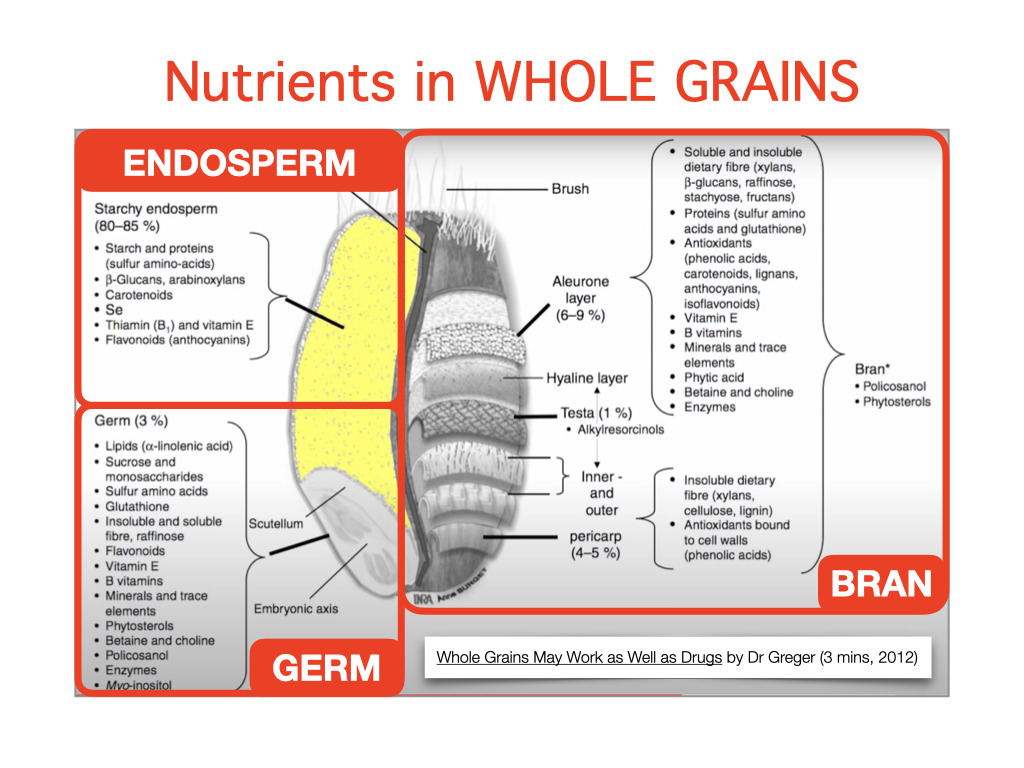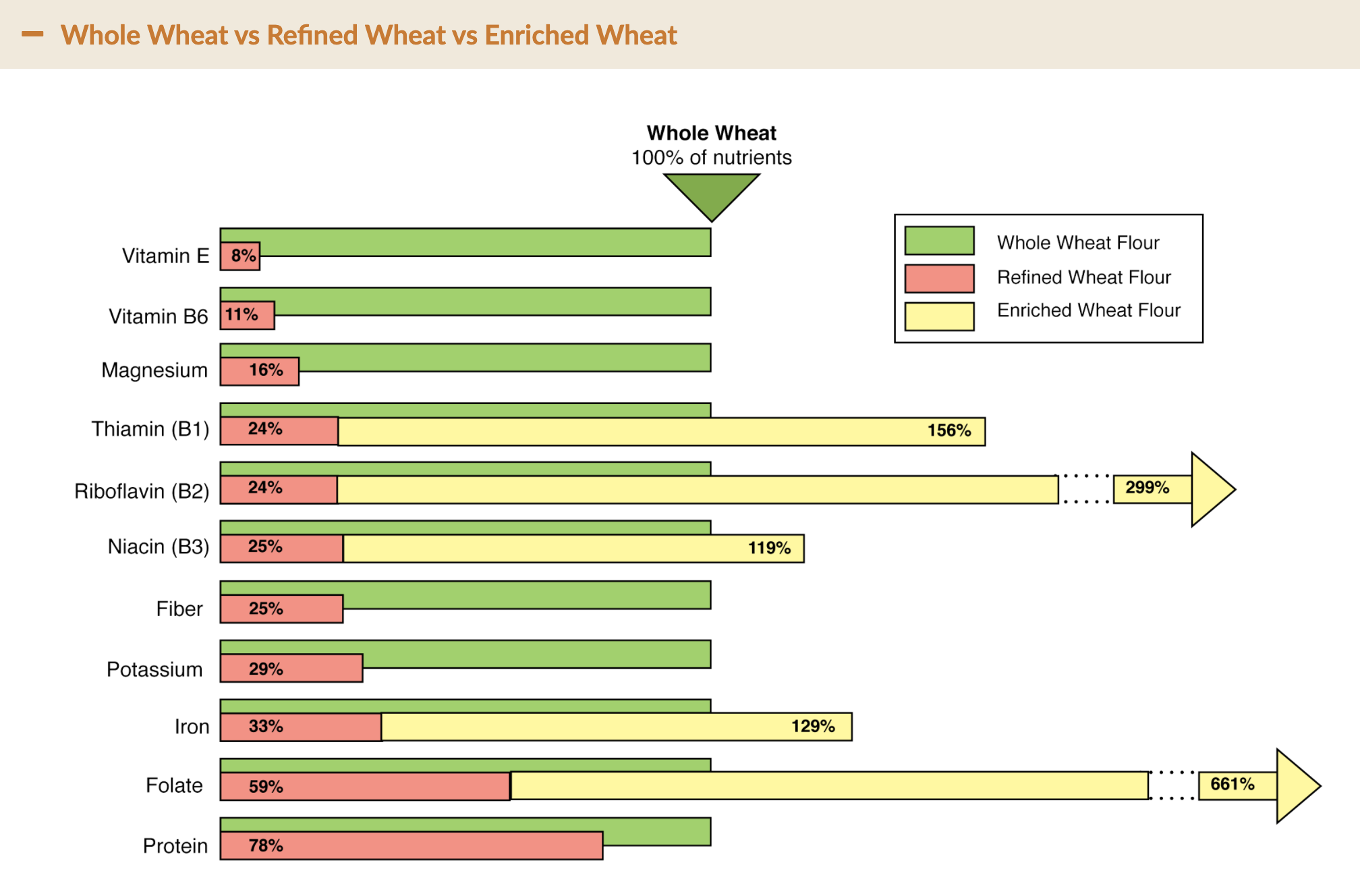Let's study wheatberry in detail:
- Bran: Approximately 14% of a wheatberry kernel. Hard outer covering, high in fiber and nutrients. Missing in refined grains.
- Germ: Approxmately 3% of a wheatberry kernel. Nutrient rich embryo that sproutes into a new plant. Missing in refined grains.
- Endosperm: Approximately 83% of a wheatberry kernel. Mostly starch, the 'sweet' portion of the grain. Found in both whole grains and refined grains.
Improved taste: Refined grains lack bran and fiber. They are rich in endosperm, the sweet tasting, carbohydrate-rich portion of a whole grain.
Longer shelf life: Whole grain flours tend to become rancid faster because of minute quantities of oil. They also attracts insects. In this Roti-Chapati video, Acharya Mohan Gupta (a Nature Cure advocate from North India) encourages us to do an experiment: Fill one jar with whole wheat flour and another with refined flour; in a few days, insects thrive in whole wheat flour (because they know it is healthier) but not in refined flour!
How many micronutrients and fiber are lost with bran and germ removal? Whole Grains Council has diagrams for refined wheat and refined rice:
Whole grains are converted into refined grains by removing both bran and germ. For this reason, refined grains are sometimes called 'degerminated grains' or 'debranned grains'.
White rice: A refined grain consumed in many parts of the world especially in Asian countries like India.
White 'poha' (also known as 'chivda') are made from white rice, a refined grain.
White 'murmura' (puffed white rice) is also made from white rice, a refined grain.
Semolina (also known as 'sooji' or 'rawa' or 'cream of wheat') is commonly used in India. Semolina is essentially the endosperm of wheat; it's missing bran and germ, making it a refined grain.
White flour made from wheat: Such flour contains essentially the endosperm, making it a refined grain. Bran and germ are part of 'chokar' (a Hindi word) which is often removed when whole wheat is ground in a 'chakki' (a 'flour grinding mill').
Pearled barley: Technically, pearled barley is not a whole grain but 'hulled barley' is. See Barley: Hulled or Pearled? for a discussion.
Pearled millet: Just like hulled barley is better than pearled barley, hulled millet is better than pearled millet. See Millet Magic for details.
Yes! Please see Why Are Whole Grains Better Than Refined Grains?

 Instagram
Instagram YouTube
YouTube



